Data Cleaning and Preparation in Pandas:
1. Handling Missing Data
Detection of Missing Data
Missing data can cause significant issues in your analysis. Detecting missing data is the first step.
import pandas as pd
# Load data from a CSV file
df = pd.read_csv('/content/Car data1.csv')
# Detect missing values
missing_data = df.isnull().sum()
print(missing_data)
Output:
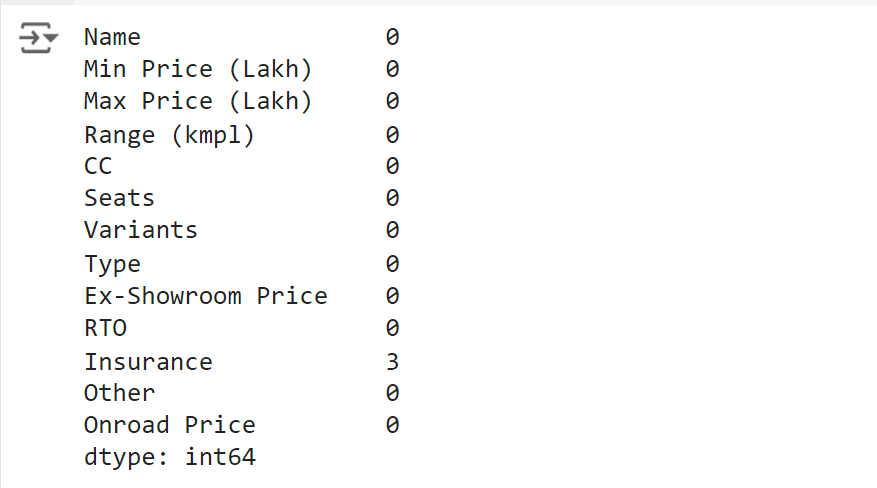
This code loads data from 'Car data1.csv' and detects missing values in each column.
Filling Missing Data
You can fill missing data using various methods, such as using a specific value or forward/backward filling.
# Fill missing values with the mean of the column df['Insurance'] = df['Insurance'].fillna(df['Insurance'].mean()) # Forward fill missing values df['Insurance'] = df['Insurance'].ffill() # Print the DataFrame to see the result print(df)
Output:
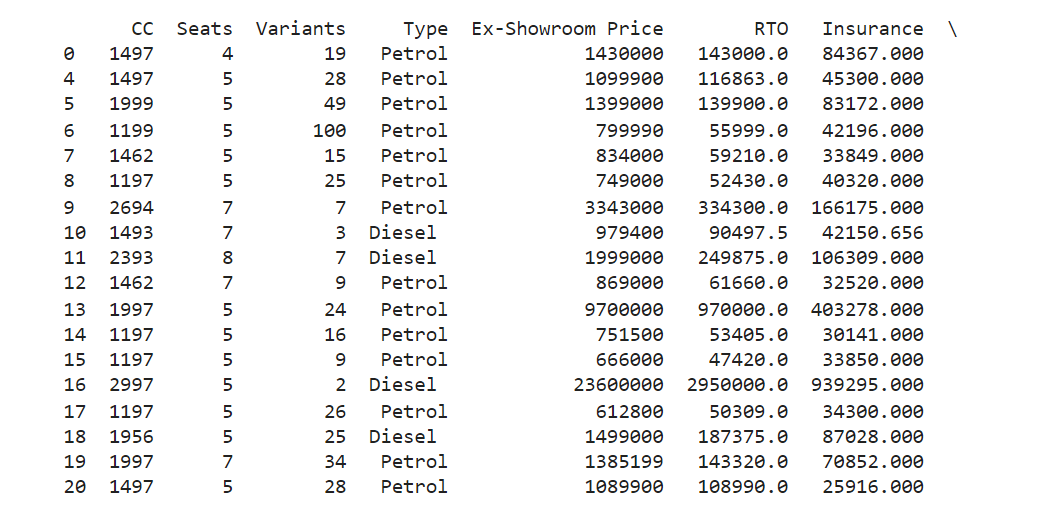
The first method fills missing values with the mean, while the second method uses the last valid observation to fill missing values.
Dropping Missing Data
If a column or row has too many missing values, you might want to drop it.
# Drop rows with any missing values df = df.dropna() # Drop columns with any missing values df = df.dropna(axis=1) print(df)
Output:
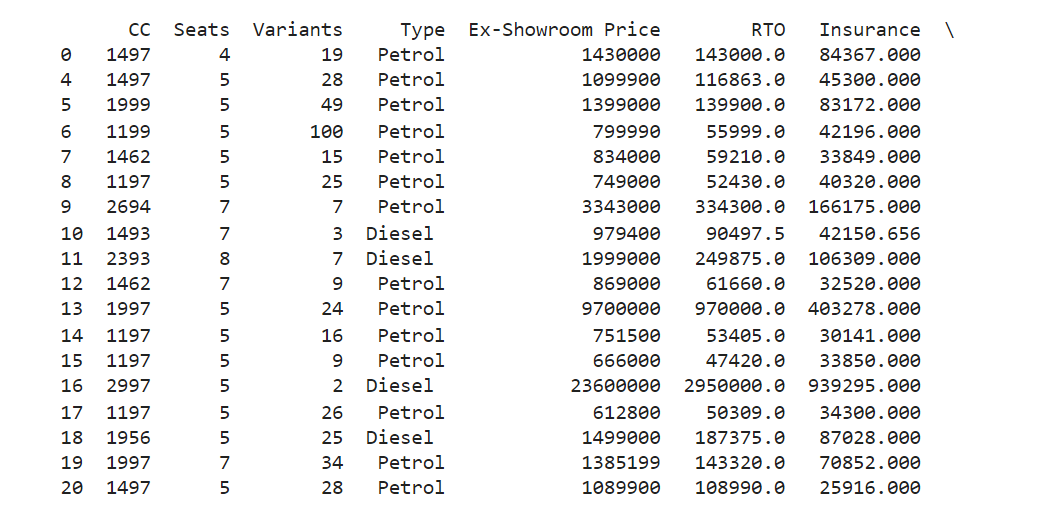 This code drops rows or columns containing any missing values.
This code drops rows or columns containing any missing values.
2. Removing Duplicates
Duplicates can skew your analysis, so it is important to remove them.
# Remove duplicate rows df = df.drop_duplicates() # Remove duplicate rows based on a specific column df = df.drop_duplicates(subset=['Other']) print(df)
Output:
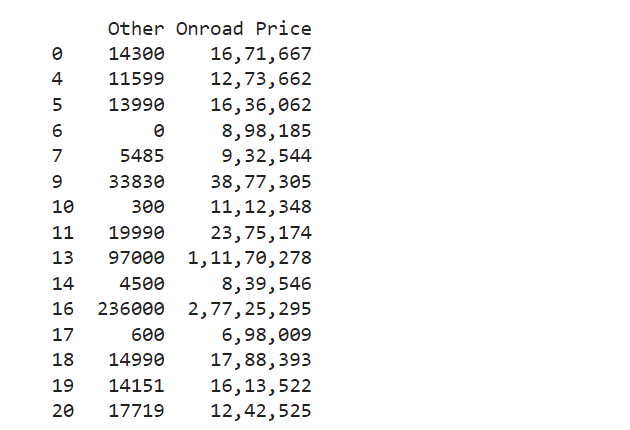
The code removes all duplicate rows or duplicates based on a specific column.
3. Data Transformation
Data transformation involves modifying your data to suit the analysis.Renaming Columns
Renaming columns can make your data more readable and consistent./p>
# Rename columns
df = df.rename(columns={'Other': 'Miscallenous'})
print(df)
Output:
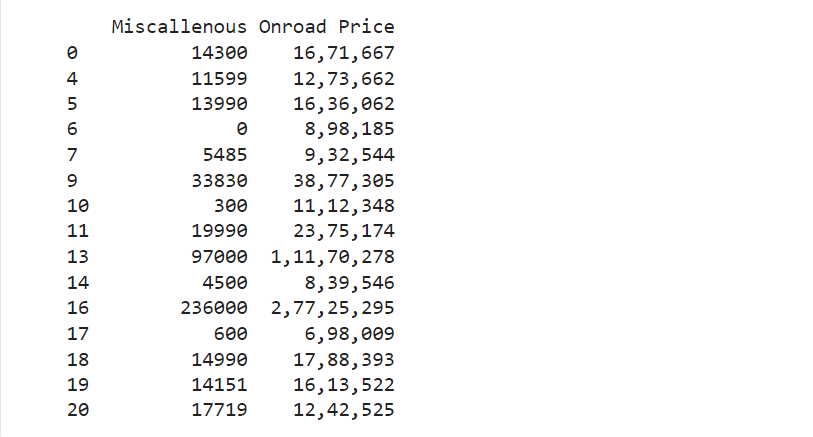
Mapping Values
Mapping values is useful for converting categorical data or simplifying data.
# Mapping values in a column
df['Seats'] = df['Seats'].map({'7': '5'})
print(df)
Output:
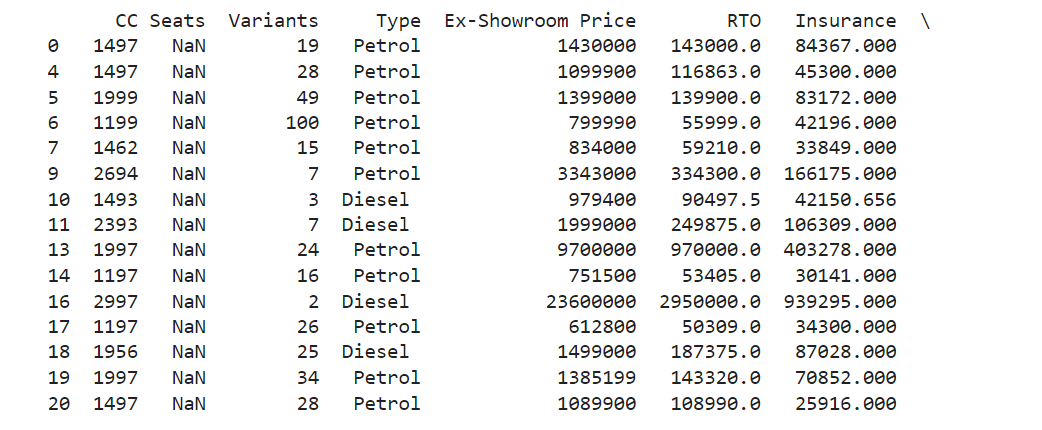
Changing Data Types
Sometimes, data types need to be changed to fit the analysis.
# Convert column to integer type df['Insurance'] = df['Insurance'].astype(int) print(df)
Output:
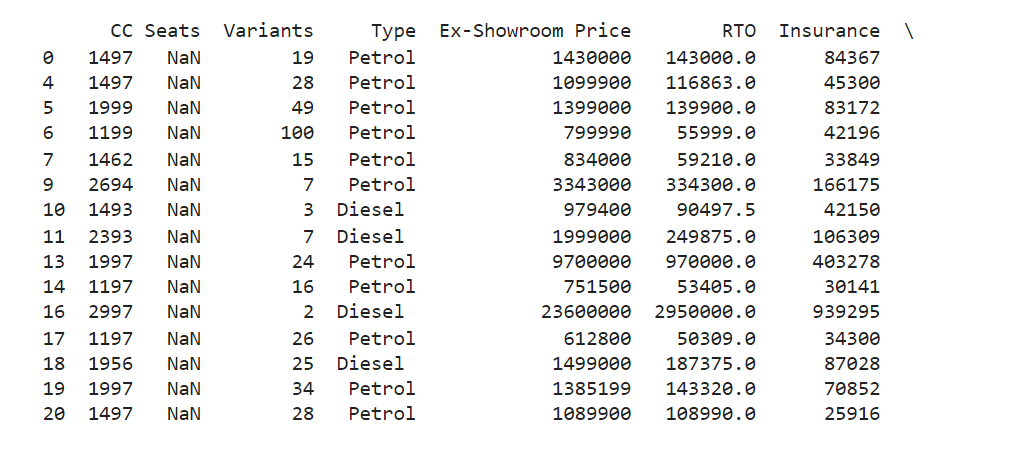
4. Handling Outliers
Outliers can distort your data analysis. Identifying and handling them is crucial.Detecting Outliers
You can detect outliers using statistical methods like the IQR (Interquartile Range) method.
# Detect outliers using IQR Q1 = df['CC'].quantile(0.25) Q3 = df['CC'].quantile(0.75) IQR = Q3 - Q1 # Filtering out outliers outliers = df[(df['CC'] < (Q1 - 1.5 * IQR)) | (df['CC'] > (Q3 + 1.5 * IQR))] print(outliers)
Output:
